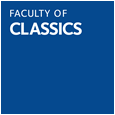In 1979, during his continuing excavation of the city of Aphrodisias, Professor K. T. Erim discovered a large temple and sanctuary complex dedicated to Aphrodite and the Julio-Claudian emperors (theTheoi Sebastoi). It had a remarkable sculptural display of which much has survived—there are about eighty relief panels. The complex would probably have been called a Sebasteion: we know from an unrelated inscription that there was one at Aphrodisias. It is of great interest to both the historian and art-historian of the early empire, giving a rare combination of buildings, sculpture, and inscriptions from a unified excavated context and providing an unrivalled picture of the physical setting of the imperial cult in a Greek city. The sculptured reliefs give a great range and combination of iconography quite unexpected in such a context—mythological, allegorical, and imperial. The myth panels seem to offer a missing link between the iconographic repertoire of the Hellenistic world and that used under the Roman empire, while the allegorical and imperial panels give a detailed plcture of the emperor and Rome as seen from the Greek East that is not available elsewhere.



